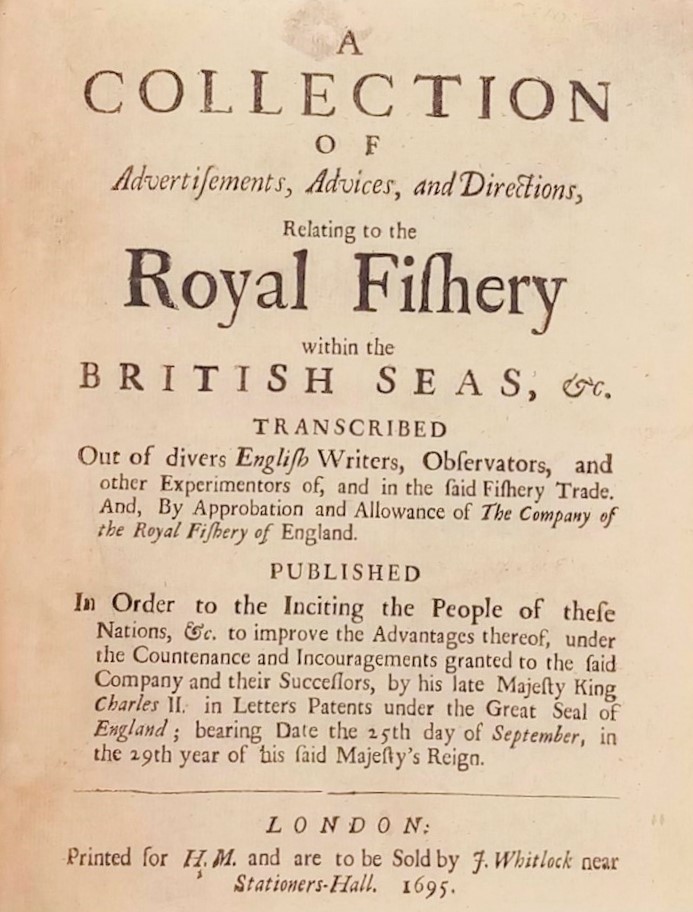
FLOUNDERING
[ROYAL FISHERY COMPANY.]
A Collection of Advertisements, Advices, and Directions, relating to the Royal Fishery within the British Seas, &c.
London, printed for H.M. and sold by J. Whitlock, 1695.
Small 8vo, pp. [2], 71, [1 (blank)]; repairs to title and last leaf, toned, some light marks; a good copy in recent marbled boards.

Added to your basket:
A Collection of Advertisements, Advices, and Directions, relating to the Royal Fishery within the British Seas, &c.
First edition. The Royal Fishery Company, incorporated in 1662, had great trouble finding subscribers. Initially, Charles II offered £9000 as an incentive to investors but on these only raising £3680 he withdrew his undertaking, instead allowing a lottery to aid the Company’s fortunes. After attempts in 1677 to capitalize the company, much of the property was sold in 1680. The complicated structures governing the company devolved onto 4 directors and 8 masters in 1692.
The present work is one of several pamphlets issued to recommend the last-ditch attempt to rescue the Company’s finances in 1695, following the sale of substantial further property in 1685–6. ‘£300,000 “or at least 150,000”’ was the target but by 30 October 1695, only a small amount had been realized. The final mention of the Company was in 1717 when token opposition was made to the ‘Grand Fishing Company’ but the charter of Charles II was now deemed void ‘through neglect’.
Goldsmiths’ 3062, Kress 1876; Wing C 5106; see Scott, The Constitution and Finance of English, Scottish and Irish Joint-Stock Companies to 1720 II, 372–376.

